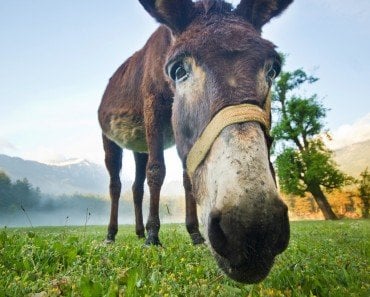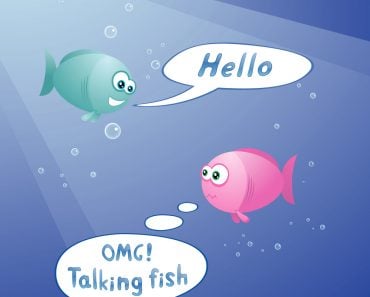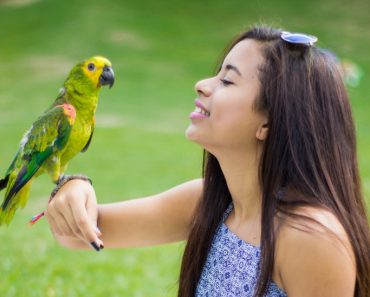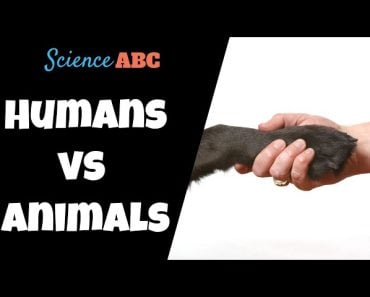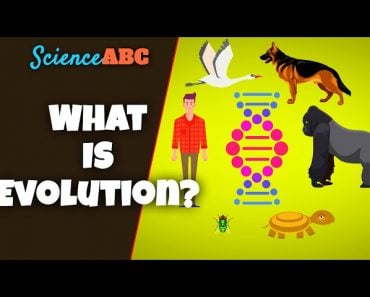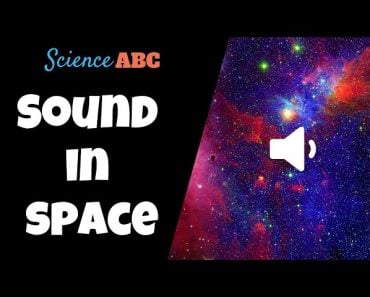Table of Contents (click to expand)
No, animals do not speak a language humans don’t understand. Although animals communicate using methods such as gestures, movements, vocal calls and their sense of smell, they lack the flexibility in their hardware to produce complex sounds that resemble utterances like human language.
Scientists have long pondered whether each animal species has a different language, much like different human languages, that we cannot understand. Linguists and psycholinguists agree on the fact that the way animals communicate through various calls does not fit the definition of human languages.
Animal calls are not considered a language because the calls are restricted to signals related to foraging (food) activities, mating, and signals to warn about the presence of predators. They lack the characteristic of productivity (in psycholinguistic terms) that all human languages share. That is, humans create new expressions every day by combining different words to convey meaning. Animal calls are fixed in their meaning, while human language goes further and includes expressions of abstract and complex ideas that do not have a restricted scope.

Recommended Video for you:
However, Animals DO Communicate…
As the famous adage tells us, ‘People speak with their eyes’, but people who study humans believe that people speak with their entire bodies. To convey a message, one does not always need words. Have you ever shared a private joke with your friend across the table? All you did was give them a smug smile. Although animals do not possess the ability to speak words, they can communicate in much the same way as humans do.
Although animals do not have words, they communicate using other methods, such as gestures, movements, vocal calls and their sense of smell. In short, most of their communication is non-verbal.
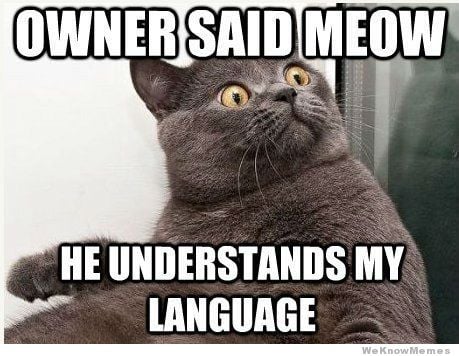
If Animals Can Utter Noises, Why Can’t They Talk?
Simply because they do not have the flexibility in their hardware to do so! Let’s look at why humans are able to speak in order to understand what animals lack.
Human and animals both have the prerequisite organs that produce sound, such as lungs, throat, voice box, lips and tongue. The difference lies in the movement and relative position of these organs that make it possible for us to speak.
When we speak, we release controlled puffs of air from our lungs, which have to pass through the voice box, formally called the larynx, in the throat to continue its journey to the mouth, where it is expelled. The larynx is made up of cartilage and muscle, on top of which is a stretched membrane called our ‘vocal cords’. When the puff of air reaches the vocal chords, they vibrate to produce sound. We can loosen or tighten our chords to produce high- or low-pitched sounds. When you think about it, this is the same mechanism/ hardware that animals and birds have that they use to growl, meow, chirp, screech…
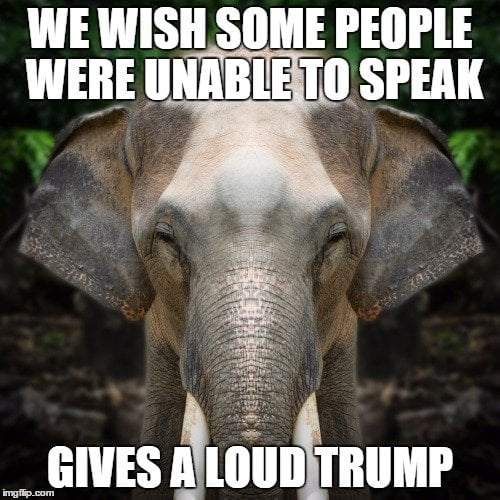
The Magic Of Word Utterance
The sound from the throat journeys into our mouth, where it can be shaped by the movement of our tongue and lips. Think of any alphabet whose sound does not involve movement of either your lips or tongue…I bet you can’t!
When we developed from apes, a lot of our features were modified and improved to better shape sounds along the way. The mouth started getting smaller and the neck grew longer. The lower jaw became less protruded, making it more flexible for movement. To better understand the jaw’s contribution, try a little exercise. Say the letters of the alphabet aloud as you open your mouth and hold your jaw fixed in a position, only moving your tongue and lips. Don’t cheat! With your jaw open, you cannot use your lips to say letters like b, f, m, p, or o! Those letters involve opening your jaw further and shaping the lips.
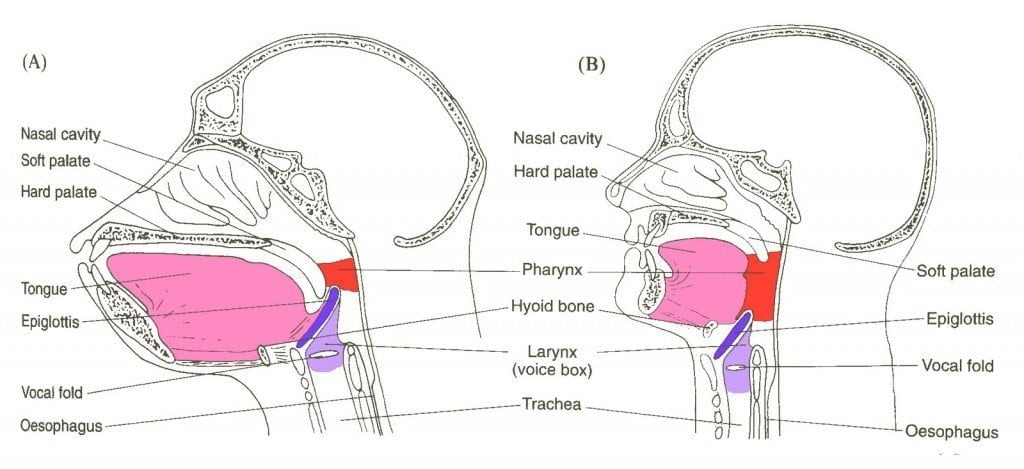
As the jaw reduced, the tongue was pushed inside the throat, making the larynx move lower. Since more space was now required for the tongue and larynx, the neck became longer. All other animals, including our closest animal relatives – chimpanzees – lack the flexibility of the vocal tract (tongue, chords, lips and jaw) to produce complex sounds that resemble utterances like human language.
Along with this motor component of speaking, humans can put words in a sequence to convey meaning due to the developed neocortex. More specifically, this is made possible by highly developed language-related sections called Broca’s and Wernicke’s Areas. Recent evidence also suggests that the presence of a gene called FoxP2 also determines our ability to speak.
In summary… well done, humans!

